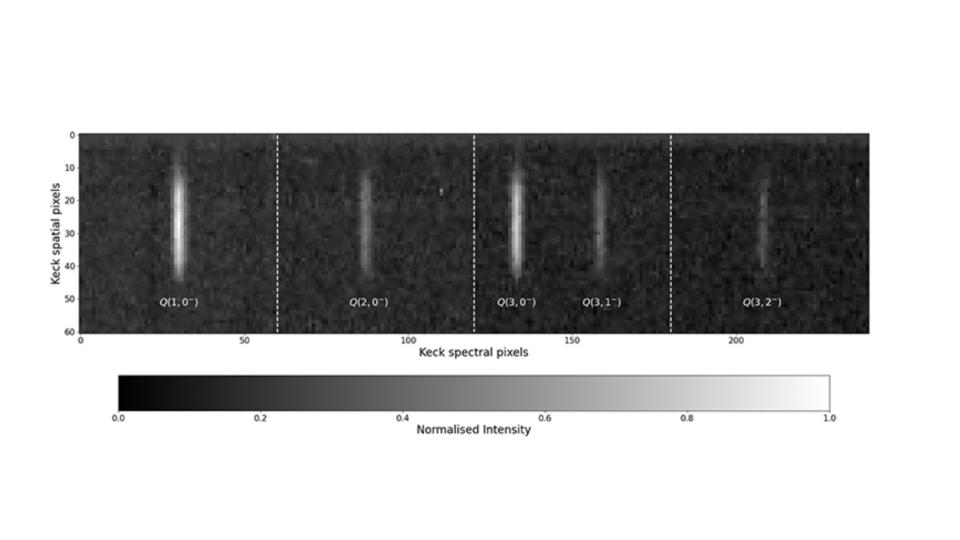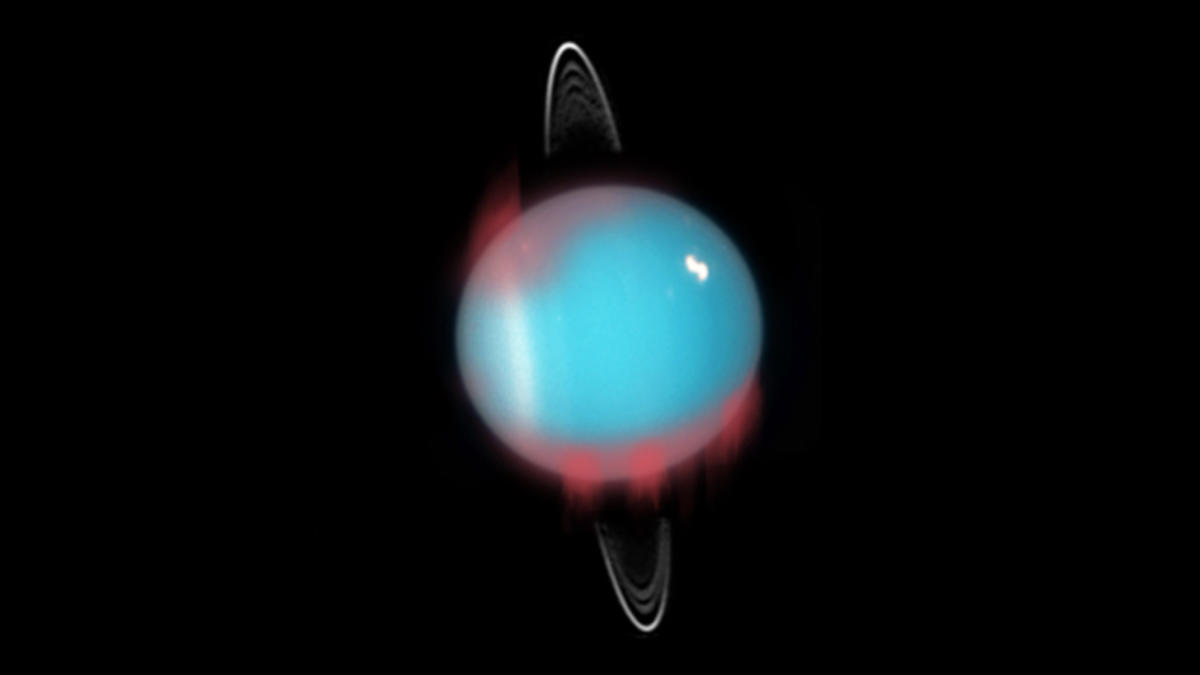Astronomers have made a groundbreaking discovery by capturing Uranus’ infrared aurora using data from the Keck II telescope on Mauna Kea in Hawaii. This is the first time that Uranus’ aurora has been observed in this wavelength.
Similar to Earth’s auroras, which are caused by interactions between charged particles in the solar wind and the planet’s magnetic field, Uranus’ auroras occur when charged particles from the solar wind interact with Uranus’ magnetic field and travel along its magnetic field lines towards the poles. As these charged particles enter Uranus’ atmosphere, they collide with molecules, causing them to emit light and creating the auroral glow.
While Earth’s auroras primarily consist of red, green, and blue colors resulting from collisions with oxygen and nitrogen atoms, Uranus’ auroras are dominated by ultraviolet and infrared wavelengths due to the abundance of hydrogen and helium in its atmosphere.
The discovery of Uranus’ infrared aurora was made possible by analyzing data from the Keck II Near-Infrared Spectrometer (NIRSPEC) taken in 2006. The astronomers, led by graduate student Emma Thomas from the University of Leicester in England, identified emission lines from the H3+ molecule, a trihydrogen cation with a positive charge. The emission of these molecules created the infrared auroral glow over Uranus’ northern magnetic pole.

The discovery of Uranus’ infrared aurora not only adds to our understanding of this distant planet, but it also raises intriguing questions about the temperature of gas giant planets. The temperatures of these planets, including Uranus, are significantly higher than what models predict based solely on solar heating. One theory suggests that the energetic aurora plays a role in generating and transferring heat from the aurora to other regions of the planet.
Furthermore, studying Uranus’ auroras could help unravel the mystery of why its magnetic field is misaligned with its rotational axis by such a large degree. By tracing the auroras, which reflect the magnetic field structure of the planet, researchers can gather valuable insights into the origin of this misalignment.
Published in the journal Nature Astronomy, this discovery marks a significant milestone in our exploration of Uranus and its unique features.


